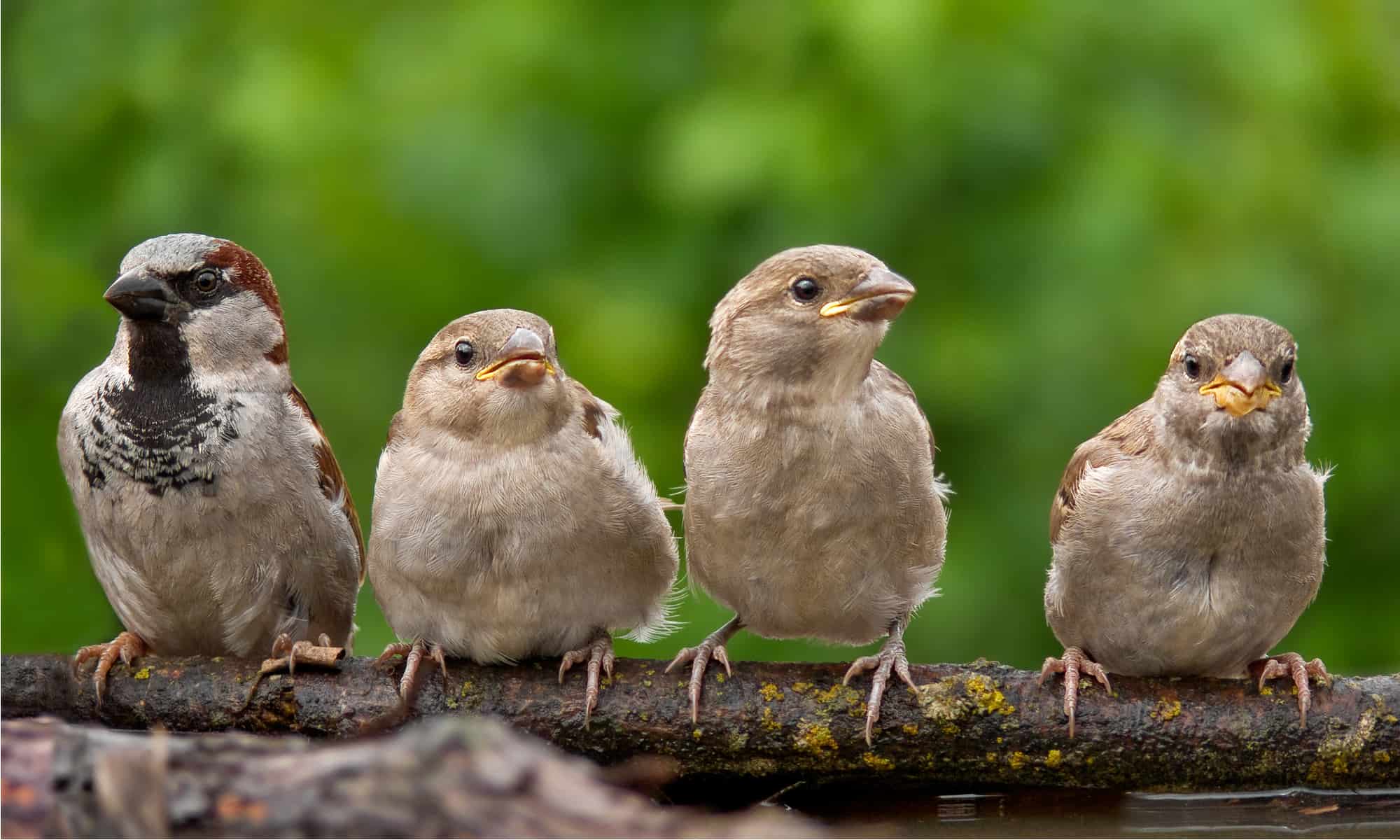Clever, energetic, and highly social, the house sparrow is one of the most common birds in the world.
More than any other bird species, house sparrows share space with human habitats. Even in areas where they’re considered to be an invasive species, they often make for a common and pleasant sight. You can attract them to your yard with a simple nest box, clean water, and some seeds. This article will cover some interesting facts about the size, diet, and call of the house sparrow.
House Sparrow vs. House Finch
With its streaky black feathers and red-colored head, the house finch looks very little like a house sparrow. The main similarity is that they both like to reside near human habitats, but their appearance and behavior are completely different.
Articoli correlati
- Beauceron vs Malinois belga: quali sono le differenze?
- Shih Tzu vs Lhasa Apso: quali sono le 8 differenze chiave?
- 8 posti segreti meglio custoditi in cui andare in pensione alle Hawaii
- Pipistrello messicano dalla coda libera
- Il più grande tonno rosso mai catturato
3 House Sparrow Amazing Facts
- House sparrows roost together in large communities, sometimes even with other species of birds. They sleep with their bill tucked beneath the wing.
- House sparrows fly by continuously flapping their wings in mostly a straight line. One of the most amazing facts is that they make about 15 wing beats per second.
- House sparrows will consume almost any kinds of seeds, but they seem to prefer oats and wheat.
Where to Find the House Sparrow
The house sparrow is endemic to most of Eurasia and Northern Africa. They’ve also been accidentally or purposefully introduced to Australia, New Zealand, and the Americas as an invasive species. As the name suggests, the house sparrow is most commonly associated with modified human habitats, including agricultural, residential, and urban areas. It is less likely to be found in areas without a human presence.
House Sparrow Nests
House sparrows construct a nest from dried vegetation, feathers, strings, and paper in a small crevice. Buildings and trees are the most common nesting sites.
House Sparrow Scientific Name
The scientific name of the house sparrow is Passer domesticus. Passer is the Latin term for sparrow, while domesticus is the Latin term for domesticated or belonging to the house. It is closely related to dozens of other sparrows within the same genus, including the Eurasian tree sparrow, great sparrow, and Italian sparrow.
House Sparrow Size, Appearance, and Behavior
The house sparrow is a small and stout bird measuring about 6 to 7 inches long from head to tail with a maximum wingspan of 10 inches. It is characterized by short legs, a thick bill, pale gray or buff plumage, and brown wings with black streaks. The sexes can be a little difficult to tell apart, but the male members usually have white cheeks and a black bib. Juveniles and baby sparrows tend to look like females, except the plumage is even paler.
House sparrows are highly territorial in defense of their nesting sites. We know that they defend nesting sites and not necessarily food resources because the sparrows will only attack members of the same sex. In the breeding season, males produce a simple trilling song to defend their territory and attract mates. It’s debatable whether this would qualify as a true song, however, because the call doesn’t have much rhythm. House sparrows of both sexes are also capable of making several different chirping calls to communicate with each other.
House Sparrow Migration Pattern and Timing
Most house sparrows remain very close to the place of their birth for their entire lives, but a few subspecies, in particular, do migrate toward warmer climates for the winter. They begin to put on weight when the winter arrives to prepare for the annual migration.
House Sparrow Diet
The house sparrow is an omnivorous bird that forages for food along the ground.
What does the house sparrow eat?
House sparrows feed on a combination of seeds, spiders, insects, worms, and other invertebrates. It will swallow tiny stones, shells, and other hard objects at the same time to grind up food in its stomach.
House Sparrow Predators, Threats, and Conservation Status
According to the IUCN Red List, the house sparrow is considered to be a species of least concern. It is not endangered at all, but population numbers have seen a dramatic decline over the years. Various theories have been put forward to explain this decline, including disease and a reduction in nesting sites, but no one knows the true reason.
What eats the house sparrow?
The house sparrow is preyed upon by numerous predator birds, including hawks, falcons, owls, and shrikes. Eggs and juveniles are vulnerable to domestic cats, raccoons, and snakes. House sparrows generally forage together in small flocks to keep an eye on potential predators. If threatened, they do have the ability to mob a predator and drive it away.
House Sparrow Reproduction, Young, and Molting
The house sparrow reproductive season normally takes place in the spring and summer, depending on its location. They form monogamous pairs that last for the entire season. The male will produce its song to attract a mate. After mating, the female will lay up to eight eggs one at a time in the nest. Both the male and the female will incubate the eggs from anywhere between 10 and 14 days. They feed the baby chicks by regurgitating food directly into their mouths. It takes only two weeks for the baby chicks to gain their full-flight feathers and begin to leave the nest. A single pair can raise up to four clutches per breeding season. The maximum recorded lifespan of a wild house sparrow was 13 years old, but due to predation and disease, most will die after only a few years.
House Sparrow Population
The house sparrow is estimated to have a total population of somewhere between 900 million and 1.3 billion mature individuals. It is one of the most widespread and reproductively successful birds in the world. Even though the house sparrow is not an endangered species, however, it might be endangered in some local areas around the world due to declining numbers.
pale buff underside and brown-colored back and wings with black streaks. Males also have white cheeks and a black bib.
What are the differences between a song sparrow and a house sparrow?
Song sparrow vs. house sparrow – the song sparrow is insectivorous, nests in shrubs, and is a ground forager. The house sparrow is omnivorous, nests in cavities, and is also a ground forager.
Categoria: Birds

